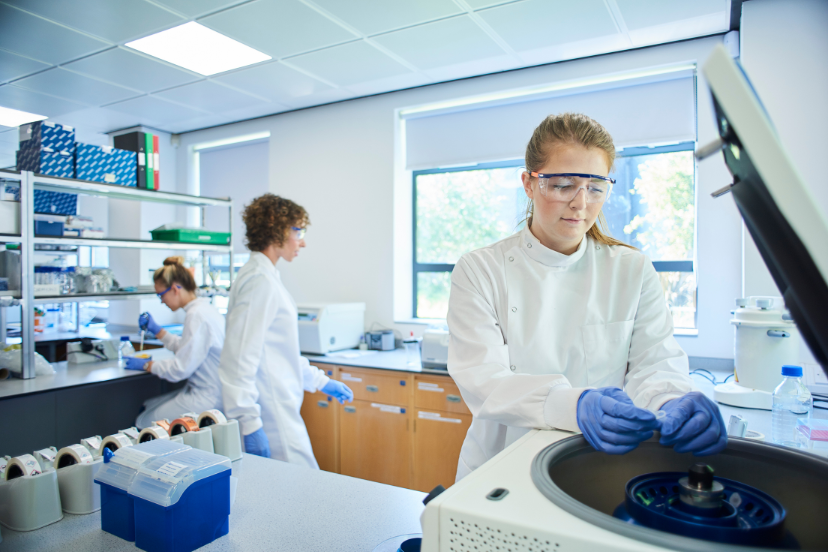Osteoporosis and Genetics Research: A Deep Dive
When it comes to osteoporosis, the conversation often centers on lifestyle choices and aging. But did you know that your genes might play a significant role in how you experience this condition? Let’s unravel the connection between osteoporosis and genetics research and see what this means for bone health.
What is Osteoporosis?
Before diving into genetics, let’s clarify what osteoporosis is. Osteoporosis is a condition where bones become brittle and more prone to fractures. It’s often called the “silent disease” because bone loss happens gradually, often without noticeable symptoms until a fracture occurs.
The Genetic Component
Your genes can significantly influence your risk of developing osteoporosis. Research has revealed that certain genes affect bone density and strength. Let’s explore how these genetic factors contribute to the condition.
Bone Density Genes
One major focus of research is identifying genes that impact bone density. For example, the COL1A1 gene is involved in collagen production, which is crucial for strong bones. Variations in this gene can lead to weaker bones.
Hormone Regulation Genes
Hormones like estrogen play a vital role in bone health. The ESR1 gene, which encodes the estrogen receptor, affects how your body responds to estrogen. Variations in this gene can influence bone density and osteoporosis risk.
Bone Remodeling Genes
Bone remodeling is a continuous process involving the breakdown and rebuilding of bone tissue. Genes like RANKL and OPG are essential in this process. Research on these genes helps us understand how disruptions in bone remodeling contribute to osteoporosis.
How Genetic Research is Conducted
Researchers use various methods to study the genetic aspects of osteoporosis. Let’s look at some of these techniques.
Genetic Association Studies
These studies compare the genetic makeup of people with and without osteoporosis to find significant differences. Identifying these genetic variations helps pinpoint genes linked to the condition.
Genome-Wide Association Studies (GWAS)
GWAS involve scanning entire genomes to find genetic variants associated with osteoporosis. These studies have revealed several genetic loci related to bone density and fracture risk.
Animal Models
Scientists also use animal models to study osteoporosis. By altering genes in animals, researchers can observe how these changes affect bone health, offering insights into the genetic factors behind osteoporosis in humans.
The Impact of Genetics on Osteoporosis Prevention
Personalized Medicine
One exciting development is personalized medicine, which uses genetic information to tailor prevention and treatment strategies. Knowing your genetic profile can help healthcare providers recommend specific measures to manage your osteoporosis risk.
Genetic Testing for Osteoporosis Risk
Genetic testing is becoming more accessible. These tests can indicate whether you have a higher risk of developing osteoporosis based on your genetic makeup. While not a definitive predictor, it can be a useful tool for proactive health management.
Genetics and Lifestyle Factors
While genetics play a significant role, lifestyle choices also impact bone health. It’s essential to combine genetic insights with healthy habits like a balanced diet, regular exercise, and avoiding smoking.
Preventive Measures Based on Genetic Risk
For those with a high genetic risk, lifestyle changes become even more critical. A diet rich in calcium and vitamin D, along with weight-bearing exercises, can help mitigate some genetic risks associated with osteoporosis.
Current Trends in Osteoporosis and Genetics Research
Advancements in Genetic Technologies
New technologies, like CRISPR, are revolutionizing osteoporosis research. These tools allow precise gene editing, which could lead to new treatments or preventive measures for osteoporosis.
Collaboration and Data Sharing
Collaboration among researchers and data sharing are becoming more common. Large-scale studies and international partnerships help pool genetic data, leading to more comprehensive findings.
Future Directions
Researchers are excited about uncovering more about how genetic variations contribute to osteoporosis. Advances in genomics and bioinformatics are likely to lead to new, practical solutions for managing the disease.
FAQs about Osteoporosis and Genetics Research
1. What role do genetics play in osteoporosis?
Genetics significantly influence bone density and strength, affecting how susceptible you are to osteoporosis. Certain genes are linked to bone health and can impact your risk of developing the condition.
2. Can genetic testing predict osteoporosis?
Genetic testing can suggest a higher risk of osteoporosis based on specific genetic markers. However, it’s not a definitive predictor and should be used alongside other risk assessments and lifestyle considerations.
3. How do genetic association studies work?
These studies compare the genes of people with osteoporosis to those without, identifying variations linked to the condition. This helps pinpoint specific genes associated with bone health.
4. What is the significance of GWAS in osteoporosis research?
Genome-Wide Association Studies (GWAS) scan entire genomes to find genetic variants related to osteoporosis. They have identified genetic loci linked to bone density and fracture risk, providing valuable insights.
5. How can personalized medicine help in osteoporosis prevention?
Personalized medicine uses genetic information to tailor prevention and treatment strategies to an individual’s specific risk profile, leading to more effective management of osteoporosis.
6. What are the current trends in osteoporosis and genetics research?
Current trends include advancements in genetic technologies like CRISPR, increased collaboration and data sharing among researchers, and a focus on translating genetic findings into practical solutions for prevention and treatment.
Conclusion
Osteoporosis and genetics research is shedding new light on how our genes influence this common bone disease. By understanding the genetic basis of osteoporosis, we’re moving towards personalized medicine and more effective prevention strategies. While genetics play a significant role, combining this knowledge with healthy lifestyle choices is key to managing osteoporosis. As research continues, we can look forward to new insights and advancements in the fight against osteoporosis.




